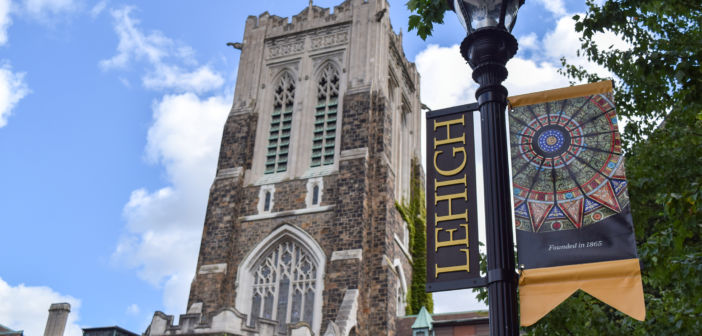About a quarter of Lehigh’s 5,075 undergraduate students are from Pennsylvania. Another quarter are from New Jersey, within driving distance from campus.
However, students who live farther away from the university encounter a series of challenges when making the trip home.
“I have to Uber down to the bus stop, take the bus for two hours, get to Newark airport and then wait another three hours for a flight, fly a 6-hour flight and then there’s a time difference, so you lose the whole day traveling,” Esther Park, ’20, said.
Park is among a small but growing group of Lehigh students who call California home. According to the Office of Institutional Research, students from California make up approximately three percent of the total student body, and this number is expected to rise in the next several years.
President John Simon’s Path to Prominence expansion plan consists of a number of goals, one of which is to grow Lehigh’s undergraduate student body by 1,000 students. Simon intends to increase the student body by recruiting students from new markets, including California.
“(Lehigh) is a highly nationally-ranked university, but it doesn’t have a national student body, and part of the goal is to make it more national,” Simon said.
As Lehigh adds new students, it will also admit students of different socioeconomic and racial backgrounds. This has raised concerns about how the university will financially assist a growing student body and how it will support the needs of students who might struggle to adjust to college life.
Simon said he is not trying to change the university, but rather make it more visible to a wider audience and attract students from across the country and world.
“It’s exciting for Lehigh to really begin to embrace its national university label, as opposed to being a great school within the Middle Atlantic and the Northeast,” said Bruce Bunnick, the interim vice provost of admissions and financial aid. “We want it to be a great institution globally.”
Simon said one of the initiatives being used to grow the student body is a new connection with the POSSE Foundation, a college access and youth leadership program. POSSE can help identify underrepresented and high-achieving students from the San Francisco Bay Area who might not have considered applying to Lehigh.
Students applying through POSSE will undergo an extensive interview process. Lehigh will then select the top 10 students and provide them with full tuition during their four years at Lehigh. The school is set to admit its first cohort of POSSE students as part of the class of 2022.
“I chose the Bay Area,” Simon said. “I wanted to signal that we’re open to all kids from different socioeconomic ranges in California.”
Lehigh is not the first university to join this initiative, but it is one of few schools recruiting from the Bay Area.
Lafayette College has partnered with the POSSE foundation for 16 years. The college recruits students out of the New York City and Washington D.C. areas.
Erica D’Agostino, the dean of advising at Lafayette College and the school’s POSSE liaison, said each cohort of POSSE students receives a mentor and a faculty adviser who serve as a support system.
Lehigh will also provide a mentor for each of its incoming POSSE cohorts.
Simon said he wants to create an infrastructure to help all students, not just those from the POSSE program, adjust to life at Lehigh. George White, the managing director for student access and success, is helping create this infrastructure.
“It’s not just good enough in my mind, in our minds, in President Simon’s mind, to get those students here,” he said. “We want to make sure that they not only graduate, but graduate with a rich experience and have all the opportunities that anybody else has.”
Park is on full financial aid at Lehigh. She said it can be challenging to adjust to life as a college student on the East Coast.
“You receive all this financial aid but joining a Greek house seems like a privilege and studying abroad feels like a privilege,” Park said. “So, it’s not really equal opportunities.”
White said he is working to provide equal opportunities and experiences for all students, regardless of their financial backgrounds or hometowns.
“We believe that by providing that kind of support, we change people’s lives and that the university experience adds value to society,” White said.
Support will not just come from student access and success. Jennifer Mertz, the director of the Office of Financial Aid, said Lehigh will continue to meet students’ financial needs, even as the university begins to increase its student body. This past year, the Office of Financial Aid distributed $84 million in aid. Five percent of this aid was merit money, 14 percent was athletic aid and 81 percent went to need-based aid.
Mertz said it is her job to advocate for students and ensure the endowment changes with respect to the student population.
A typical financial aid package averages out at about $36,000. Simon said the university would need to increase its approximately $1.3 billion endowment by 20 percent to meet 100 percent of students’ demonstrated need.
Simon said increasing the endowment will be the focus of his job for the next few years. He plans to use fundraising as a means to increase the endowment.
“I’ve always believed that higher education is one of the great social mobility factors in our society, and it can happen over four years,” Simon said.
However, in order to succeed, students need more than just financial support.
Park said she had a hard time transitioning to Lehigh and wishes she had a stronger support system coming in.
“I wish I had someone to talk to about, ‘This is where I come from, this is what I believe in, this is what my hometown was like,’ and so this is very different,” Park said. “And I don’t know how to adjust to that, and I have no one to talk to about that.”






Comment policy
Comments posted to The Brown and White website are reviewed by a moderator before being approved. Incendiary speech or harassing language, including comments targeted at individuals, may be deemed unacceptable and not published. Spam and other soliciting will also be declined.
The Brown and White also reserves the right to not publish entirely anonymous comments.
2 Comments
Sort of like when you graduate and get a job in another part of the country.
I understand providing a support system for students who don’t have a local or otherwise easily accessible support system close to campus. But something about how this article is written strikes me as ridiculous. Lehigh has committed to meeting 100% of students’ demonstrated financial need, and more than 50% of current students receive need based financial aid in some form or another. The $84 million in grants that are given out each year come from donations to the University and the endowment. This is all great and I’ve given every year since I’ve graduated to support it. I also believe in the value of a diverse student body of different backgrounds, home states, and socioeconomic levels. BUT for a student to have 100% of his or her cost of attendance met, to go to college basically for free, and then turn around and say that Lehigh isn’t doing enough to financially support its students or that they resent their inability to join a Greek house or to study abroad or that getting to and from campus is too difficult is absurd. I don’t mean to shame anyone who receives financial aid. I’m simply saying that there’s a limit to the University’s responsibility and that students have to take some ownership without complaint.